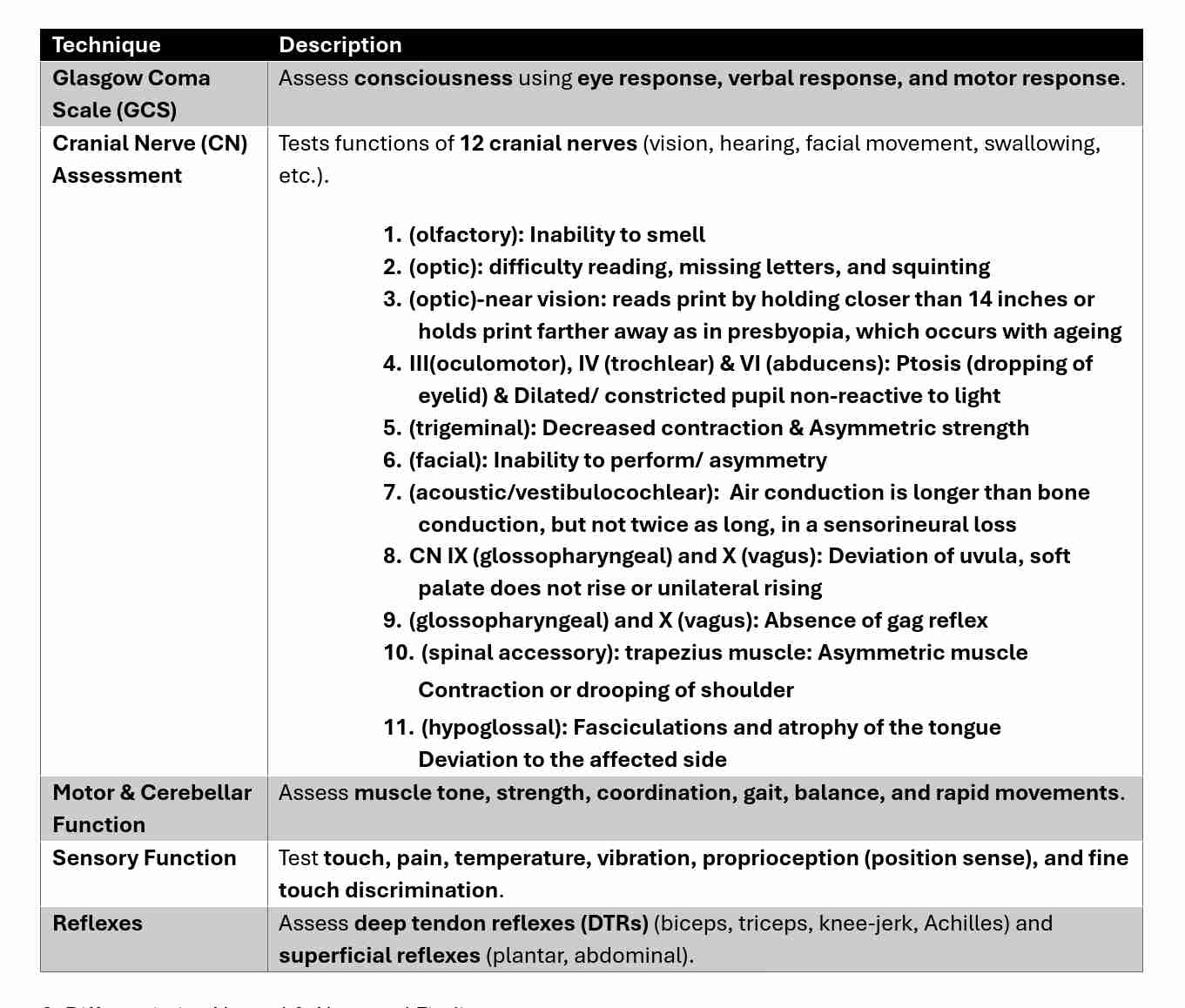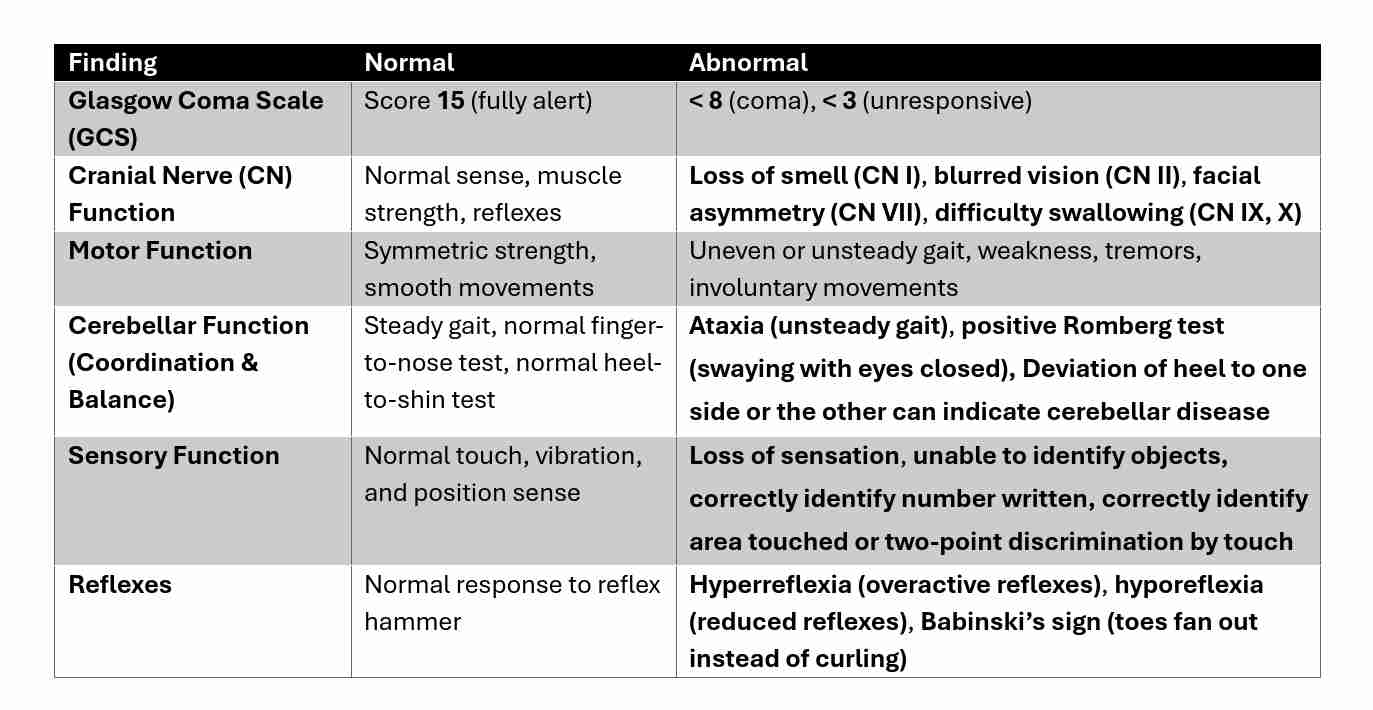Neurological System
1/3
There's no tags or description
Looks like no tags are added yet.
Name | Mastery | Learn | Test | Matching | Spaced |
|---|
No study sessions yet.
4 Terms
Normal Anatomy & Physiology Neurological System
The nervous system is divided into:
Central Nervous System (CNS): Brain (cerebrum, cerebellum, brainstem) and spinal cord.
Peripheral Nervous System (PNS): Cranial nerves (12 pairs) and spinal nerves (31 pairs).
Autonomic Nervous System (ANS): Sympathetic ("fight or flight") and Parasympathetic ("rest and digest") responses.
Functions of the Neurological System
Sensory (afferent) pathways: Transmit signals from the body to the CNS.
Motor (efferent) pathways: Carry signals from the CNS to muscles for movement.
Cranial nerves: Control vision, smell, taste, hearing, balance, facial movement, swallowing, and speech.
Reflexes: Involuntary responses that help maintain posture and protect the body.
Physical Examination Techniques
Patient Preparation
Verify identity, explain the procedure, obtain consent, assess for pain.
Ensure the patient is in a comfortable position (sitting/lying down).
Equipment needed: Snellen chart, pen torch, tuning fork, tendon hammer, cotton ball, paperclip, tongue depressor.

Differentiating Normal & Abnormal Findings

Analysis of Findings from Interviews General survey & physical examination
History Taking:
Headache, dizziness, seizures, numbness, weakness, memory loss.
Past stroke, head trauma, infections, family history of neurological disorders.
Lifestyle factors: Smoking, alcohol, medication use, stress.
General Survey:
Level of Consciousness (LOC): Alert (normal), drowsy/confused (brain injury, stroke).
Speech & Language: Clear (normal), slurred (dysarthria), difficulty finding words (aphasia).
Facial Symmetry: Even (normal), drooping (stroke, Bell’s palsy).
Gait & Balance: Steady (normal), unsteady/shuffling (Parkinson’s, ataxia).
Body Movements: Smooth (normal), tremors (Parkinson’s), involuntary movements (chorea, dystonia).
Cognition & Memory: Intact (normal), memory loss/confusion (dementia, head trauma).
Physical Examination Findings:
Cranial nerve abnormalities → Stroke, multiple sclerosis, brainstem lesion.
Loss of coordination, tremors → Parkinson’s disease, cerebellar dysfunction.
Hyperreflexia or Babinski sign → Upper motor neuron lesion.
Sensory loss → Peripheral neuropathy (diabetes, vitamin deficiencies).